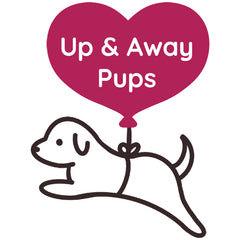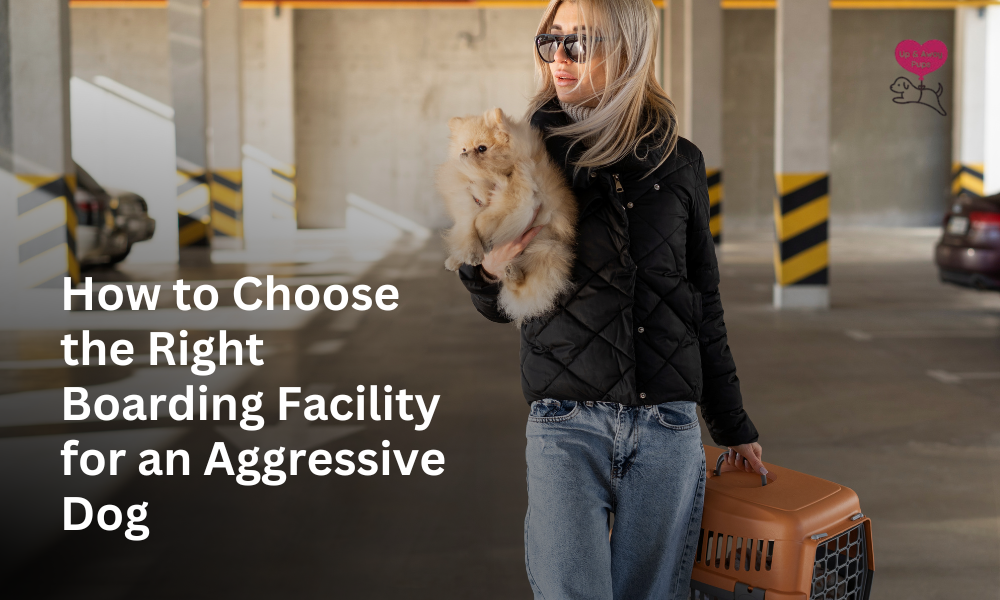How to Choose the Right Boarding Facility for an Aggressive Dog
Boarding an aggressive dog can be stressful, but with the right approach, it's manageable. This guide covers how to understand your dog’s triggers, find specialized facilities, assess staff training, evaluate safety measures, and request trial stays. It also highlights the importance of reviews and alternative care options, ensuring your dog’s well-being and your peace of mind while you're away.
If you need to go somewhere for some time, for a vacation or work, leaving your dog behind at a boarding facility can be quite stressful for all parties involved. If your dog has a history of aggression, the stress is doubled. In such a situation, finding a facility actually capable of handling your pet’s safety and the well-being of others matters a lot.
Here's a guide to help you make an informed decision.
Understand Your Dog's Behavior
As a pet owner, it is, first, your responsibility to understand your dog’s behavior. You don’t have to be extremely skilled at the art/science of dog behavior, but simply understanding what triggers your pup goes a long way. Is your dog triggered by noise? Are they aggressive towards other animals or people, or both? You need to understand your dog’s triggers in order to find a facility that is actually equipped to handle such behaviors.
Research Specialized Boarding Facilities
Every boarding facility is different in terms of their specialization and dog-size capacity. Most boardings are on the general side of things, dealing only with the average pup. On the other hand, what we’re looking for are facilities that specialize in caring for dogs with behavioral issues, with experienced staff trained to manage and mitigate aggressive behaviors. Speaking of which…
Inquire About Staff Training and Experience
Feel free to ask the facility about how their staff is trained, how much experience they have dealing with aggressive dogs, and any other questions you might have. Don’t shy away. Remember, you’re handing over your furry kid to a facility, and if they don’t encourage you asking questions, that’s a red flag.
Evaluate Facility Layout and Safety Measures
The physical environment of a facility plays a huge role in managing aggressive dogs. The environment impacts behavior, and that’s a phenomenon that is quite well documented. So, when you’re selecting a facility, make sure that they have:
• Individuals' kennels wherein the dogs can have some private space and not be forced to interact with other dogs.
• Tall and strong fencing because if an aggressive dog isn’t getting their way, they might try to escape this new environment.
• Minimal noise and distraction and plenty of fun and calm things to do for the dogs in order to reduce stress, since the environment is a trigger.
Discuss Emergency Protocols
Murphy’s law says what can go wrong will go wrong. We don’t always listen to Murphy, but there is a point to that statement; accidents can and do happen. That is why we have emergency protocols and fail-safes in place. For a doggy boarding facility, they ought to have:
• Veterinary Access
• Incident Management
• 24/7 Supervision
Request a Trial Stay
Before committing to a long-term boarding arrangement, request a short trial stay. This allows you to observe how your dog adapts to the facility and how staff handle your dog's behavior. It's an opportunity to identify any potential issues early on.
Check References and Reviews
Every brand markets itself, but marketing isn’t always objective. The best reviews about the claims of a brand’s product or service come from customer reviews. Seek feedback from other pet owners who have boarded their aggressive dogs at the facility, as these will be the most unbiased opinions out there. Online reviews and personal testimonials are going to be your second-best friend, right after your dog.
Consider Alternative Options
If there are no boarding facilities that seem to fit, consider alternatives like a friend or family member who can take care of your dog while you’re away. There are also professionals who’ll “doggy-sit” your pup at your home.
Conclusion
It can be difficult finding the right boarding facility for an aggressive dog. You have to do a ton of research, calling, and comparisons. However, it is important. Remember this: the facility should be trained in dealing with aggressive dogs. Leaving your aggressive dog at a generalized facility is a disaster waiting to happen. Use the vetting process mentioned in this blog to find an actually capable facility for your dog so you’re at peace whilst away.
FAQs
Q1: Can all boarding facilities handle aggressive dogs?
Not all boarding facilities are equipped to handle aggressive dogs, as some are generalized facilities for the average house dog.
Q2: What should I do if my dog has a history of aggression?
Consult with a veterinarian or professional dog trainer to address your dog's behavior before seeking boarding options.
Q3: How can I ensure my dog is safe while boarding?
Choose a facility with experienced staff, secure enclosures, and clear emergency protocols. A trial stay can also help assess the facility's suitability for your dog.


